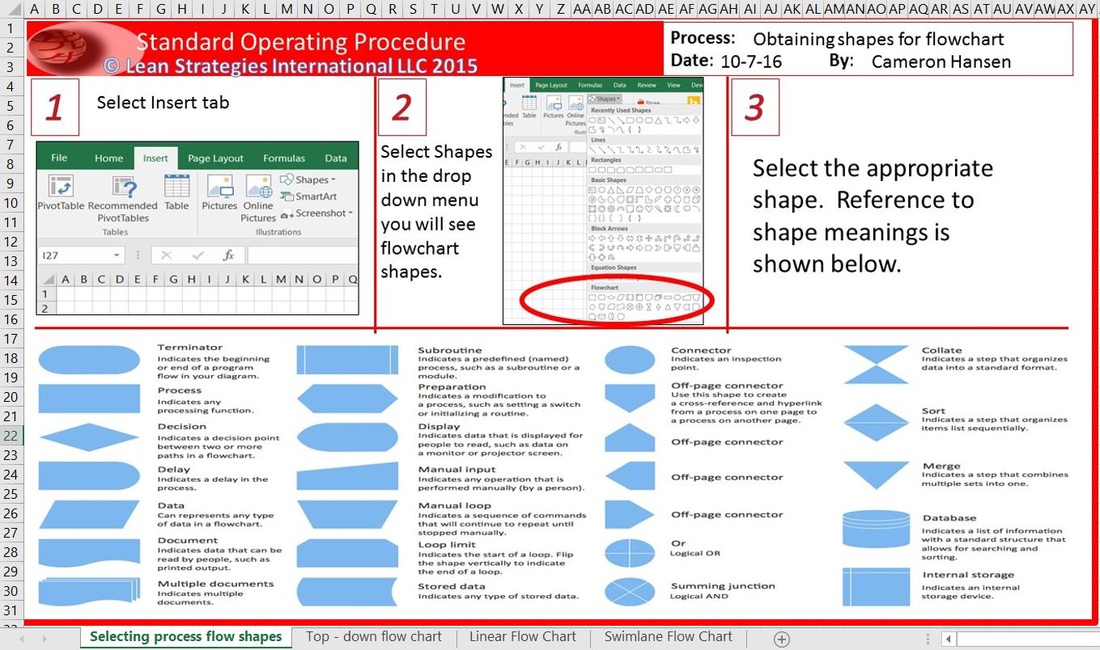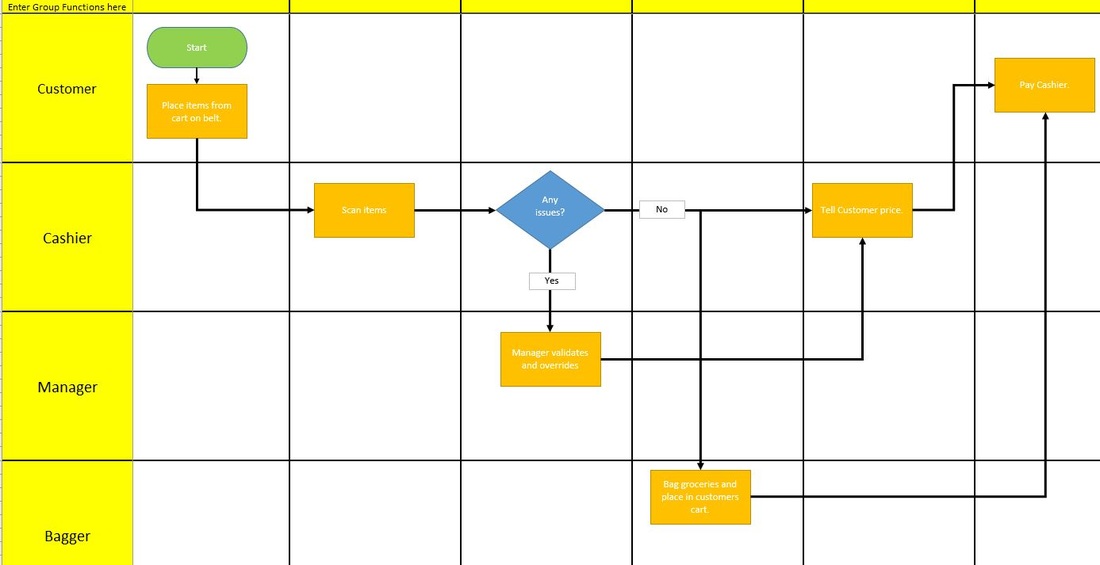|
One of the most effective tools any process orientated employee can use is the process map. The process map has been around since the dawn of time and has evolved into many different iterations in order to meet users needs. Along with the flexibility of a process map it's quite effective at showing a user where pain points in a process might be. What is a process map? Process mapping refers to a tool used to make business processes visual. The process map documents an entire process step by step which allows us to see relationships between inputs and outputs of a process along with clear identification of decision points and many other steps in the process series. The process map is generally used towards the beginning of initiatives in order to understand the flow of a process but it can also be used in support of almost every phase of improvement projects. Different Types of process maps: Traditionally there are many different types of process maps that have been developed and used. For example a SIPOC and a value stream map are forms of process maps but generally provide a much deeper level of understanding as they identify information flows too. In general there are three different categories of process maps:
Why do we process map? In general process maps provide us with a visual display of the sequence of steps within a process. They can also be used as a method of communication. We have all been a part of a project that goes around and around in circles trying to remember and figure out what actually happens in a process. When we make those steps visible the process is communicated to everyone in a more understandable language. There may be times where you need to add in steps here and there but with the map visual and near the area where the process actually occurs, the communication of the process is much more accurately defined. Another very common reason for process mapping is that a visual map can aid us in the analysis of a business process. Some of the ways we can use process maps to analyze are:
How do we build a process map? Process mapping is a fairly simple process to learn. But there are a few general rules to follow when you build a process map.
Different Tools for Building your Map: Process maps can be built with stickie notes and butcher paper, excel, powerpoint, word or in vizio. Over the years I have grown to love stickies and butcher paper because it is much less restrictive and can be built anywhere. For our purposes today though we will use excel to build our process map. Today we will cover three types of process maps: The top down flow chart, the linear flow chart and the swimlane or cross functional flow chart. If you haven't downloaded a template yet, you can do so by clicking here. The first thing you will want to look over is the first tab of the template. Excel makes it very simple to choose your symbols by simply clicking on the insert tab and selecting shapes. At the bottom of the shapes you will notice symbols for building a flowchart. You can try to memorize them right away but there is also a reminder of the symbols meaning in the first tab.
The great thing about a top down chart is that we can still drill into each of the process steps below it. 2. We then can ask the subject matter expert, "what do you have to do to get the ingredients out?" The person baking the cake might say:
Linear Flowchart: The next type of map you will find in your template is known as a linear flowchart. The linear flowchart is a diagram that displays the sequence of work steps that make up a process. It will show decision points, rework loops and a few other elements. Let's make a linear flow chart for our cake.
Swimlane Flowchart: The final flow chart we will look at is the swimlane flowchart. These types of flowcharts are often referred to as deployment flowcharts too. The swimlane flowchart is used to distinguish what job function of the organization is performing what steps. They can be used to show back and forth activities between steps and unlevel workflows.
As you can tell in the swimlane diagram above we can see very clearly who is responsible for what process step. If there were overlapping steps we would see those stacked which may be a trigger that there is an opportunity for improvement. What should process maps have? Like any other map a process map has a few unspoken rules we should do our best to adhere to. First and foremost be sure to label the process name and the team somewhere on the map just in case there are any questions. You may also want to place a date on the map of when it was created. Next the process map should be very simple to read, it needs to go in one direction not up and down and side to side. Try to keep a flow that is either left to right or top to bottom. You will also need to identify start points and end point and keep all of your loops closed. Did I include all these unspoken rules? Helpful things to look for in a map. We mentioned a few items to look for in our process maps but let's summarize them here now that you are an expert.
0 Comments
Your comment will be posted after it is approved.
Leave a Reply. |
AuthorClick Here to Submit Your Post on Listen to the Gemba. Archives
June 2024
Categories
All
Recommended Readings |









